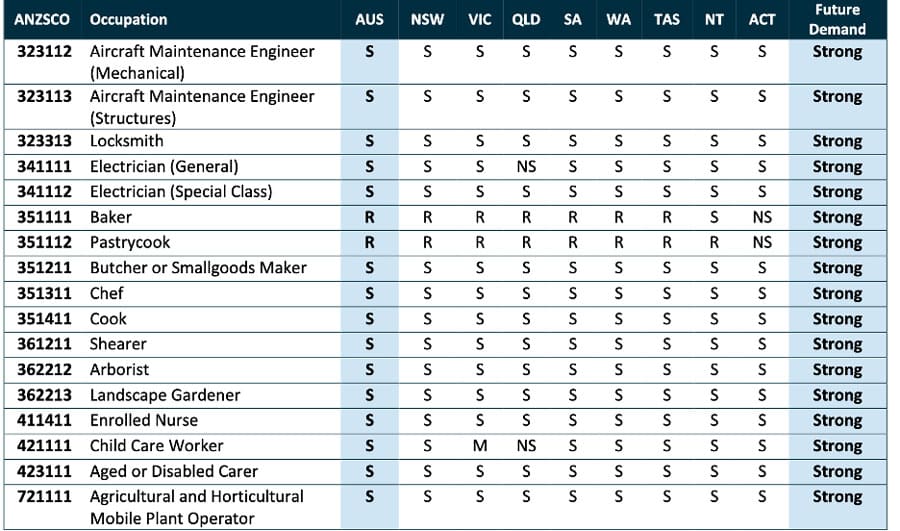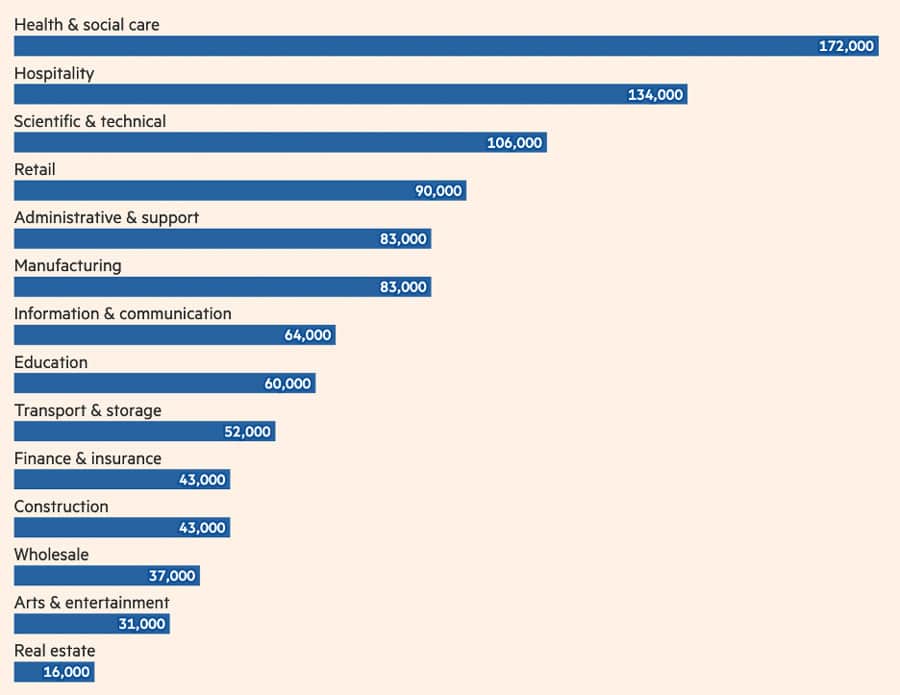Mapping labour market skills gaps in leading study destinations
- Many international students are interested in jobs in host countries after graduating – this article looks at the occupations being prioritised by governments in Australia, Canada, Germany, the UK, and the US
Ever more, leading destinations for international students are tying their immigration strategies to skills gaps in their economies, as well as their allowances for students working while studying or post-graduation (see Australia and Canada for recent examples).
Given that many students are interested in programmes with strong post-graduation career outcomes, we’ve devoted this article to outlining major skills shortages in top destinations right now. Programmes focused on providing students with those skills are increasingly attracting the attention of international students (see Nigeria and nursing, for example, and we hope that the article will also be useful for educators who are attempting to market niche programmes (e.g., outside of the traditionally popular areas of business & administration and computer science).
Canada
According to Statistics Canada, from 2019 to 2021,
“Restaurants, catering and hotel businesses more than doubled their vacant positions 86,400 job vacancies, a growth of 112.8%. Healthcare and social assistance job vacancies rose by 78.8%, or 52,100 positions. The construction sector’s vacant jobs increased by 83.7%, or 34,300 positions, retail by 45.2% 32,400 job openings, and the manufacturing sector by 62.4% or 31,200 open jobs.”
Meanwhile, Canada’s Global Talent Stream is specifically designed to attract graduates and workers in the following areas:
- Computer and information systems managers
- Computer engineers
- Mathematicians and statisticians
- Information systems analysts and consultants
- Database analysts and data administrators
- Software engineers and designers
- Computer programmers and interactive media developers
- Web designers and developers
- Computer Network technicians
- Information systems testing technicians
- Producer, technical, creative and artistic director and project manager – Visual effects and video game
- Digital Media and Design
Canadian vocational programmes are designed to provide students with job-ready skills. These are the jobs experiencing high demand for workers with vocational training, including nursing, healthcare, engineering industries, and aerospace – as well as the credentials required for the jobs.
United States
Glassdoor recently published a list of the top-paying jobs in the US (all over USD $100,000), while the US Department of Labour published “20 occupations with the highest projected percent change of employment between 2020–30,” from wind turbine servicers to nurse practitioners to information technology analysts and more.
The US Chamber of Commerce noted this year, “When taking a look at the labor shortage across different industries, the transportation, healthcare and social assistance, and the accommodation and food sectors have had the highest numbers of job openings.”
Other occupations with high vacancy rates in the US include respiratory therapists, dental assistants, home health aids, operations managers, and diagnostic medical sonographers.
Australia
In Australia, the government’s announcement in fall 2021 that international students working in certain occupations would be eligible for extended work rights provides a good idea of the labour market areas most in need of skilled talent. A special exception for more work hours has been provided for students who are:
- “Working for an aged care Approved Provider or Commonwealth-funded aged care service provider with a RACS ID or a NAPS ID;
- Working for a registered National Disability Insurance Scheme (NDIS) provider;
- Enrolled in a healthcare-related course and are supporting the health effort against COVID-19, as directed by health officials;
- Working in the agriculture sector;
- Working in the tourism and hospitality sector;
- Working in a supermarket, or associated distribution facility, located in an area impacted by COVID-19 lockdown restrictions for the duration of the lockdown.”
The government has prioritised immigration candidates who can demonstrate skills in fields including engineering and healthcare but also several other categories. In 2021, these are the sectors that were responsible for the most approved visas in Australia:

The Skills Priority List created by the government in 2021 provides a very helpful understanding of the skills for which Australia will experience the strongest need for going forward. Occupations are ranked in terms of “strong, moderate, and soft” related to anticipated demand for workers. Here’s just section of the list:

United Kingdom
The UK government has published its 2022 Skills Shortage Occupation List and while it’s not surprisingly loaded with engineering and computer science jobs, there are notable other occupations on the list including architects, veterinarians, welders, social workers, and paramedics. The Skills Shortage List is described as:
“A list of occupations which are deemed to be of short supply in the UK. Employers are allowed to hire and sponsor overseas workers in these roles under more favourable criteria than for roles that are not on the list.”
In the tech sector specifically, there are skills shortages in the areas of cybersecurity, big data and analysis, and data architecture.
In July to September 2021, these were the sectors with the highest job vacancies in the UK:

New Zealand
New Zealand is tying its immigration strategy to skills gaps in the economy. It has just published a new “Green List” – which it will use as a basis for determining whether certain international students are eligible for post-study work rights. This link leads to the list and will enable readers to see which credentials are required for specific occupations.
Germany
Like other leading destinations, Germany requires many more healthcare workers, as well as workers in STEM-related fields. According to the European Centre for Vocational Training,
“Experts in science, engineering, business, healthcare, and teaching will be in high demand. High-level professionals in these disciplines are estimated to account for 25% of occupations. Technicians are predicted to account for 17% of positions, while clerical support professionals will account for 14%.”
Outside of that, job growth over the next ten years is expected to be driven primarily in the areas of farm and associated labour, the services sector (i.e., professional, administrative, and financial services), and real estate and telecommunications.
For additional background, please see:













